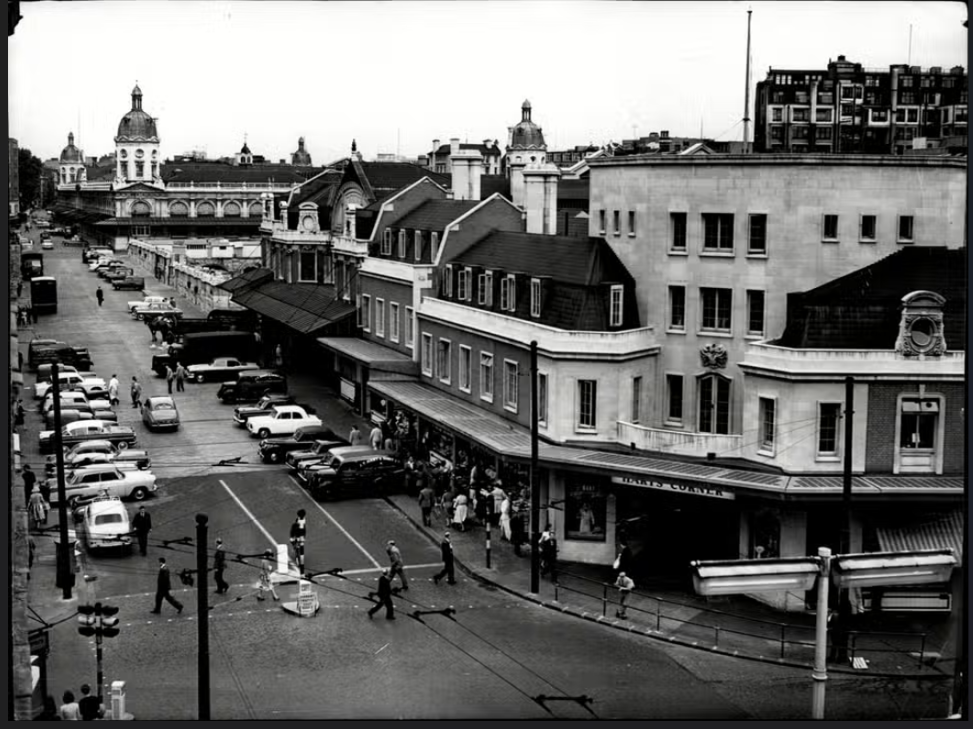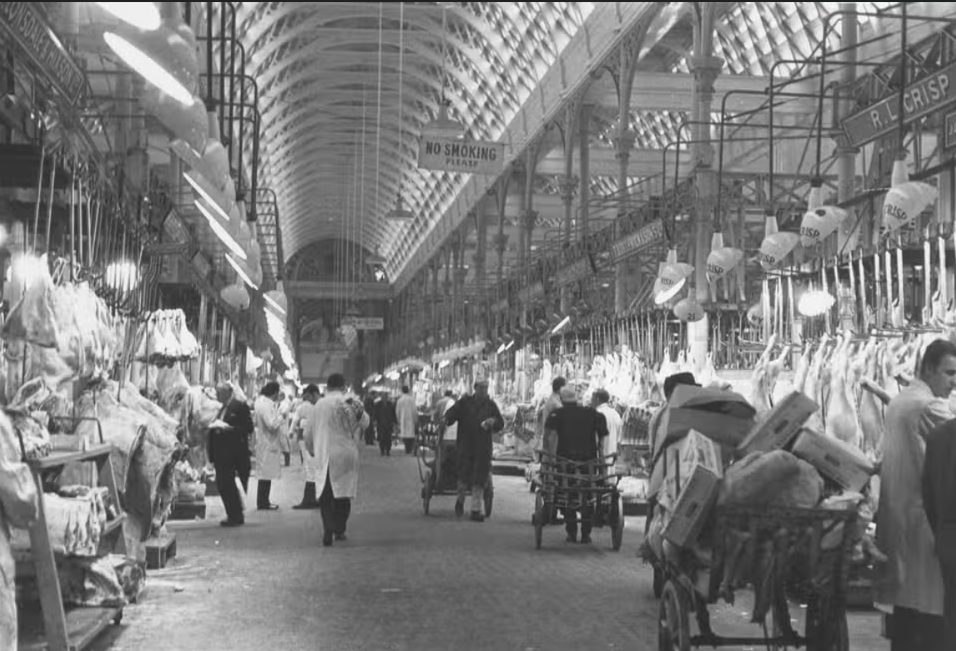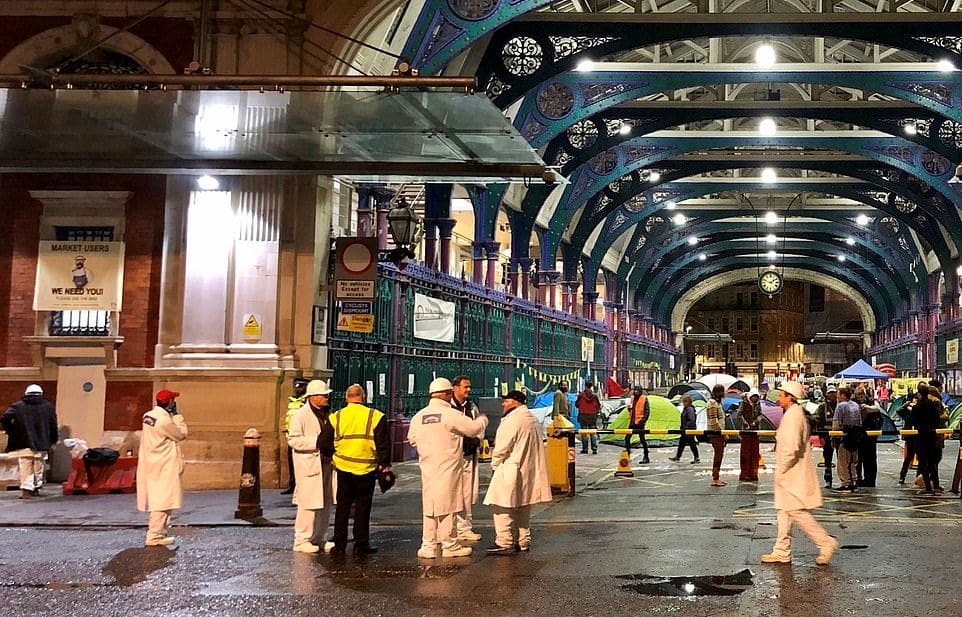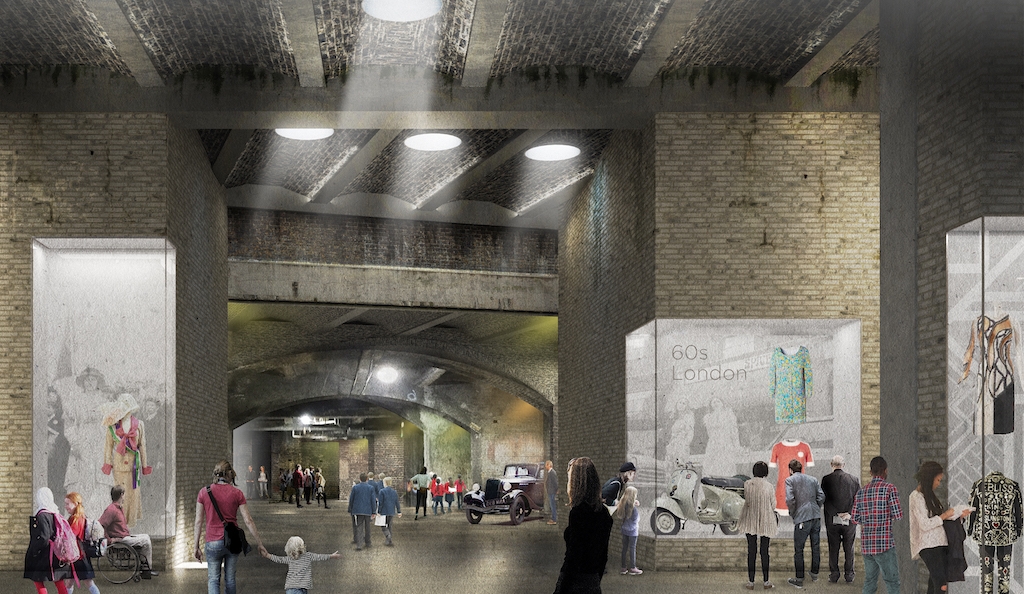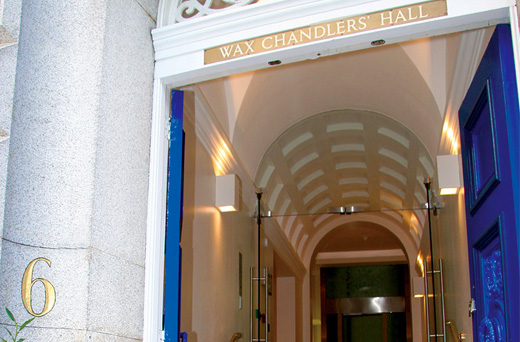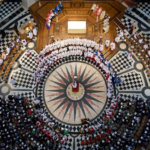On our doorsteps…
Within a stone’s throw from our Hall in Gresham Street we have many interesting and historical buildings and locations, which often we ignore, or take for granted, in the hustle and bustle of the City as we make our way to the Hall. One of these is the old Smithfield Meat Market.
I was born in June 1961 on one of those warm humid sticky summer nights, that you get in London in the nearby St. Bartholomew Hospital My mother often use to tell me that the first sounds I would have heard were from the busy Meat market with the noise of deliveries and the chatter and banter of the, predominantly East End, market workers (probably explains my colourful language on occasions). In my later years, as a Police Officer I was based just over Met/City border at Holborn Police Station.
It was the custom, after a long and arduous night duty, for us thirsty cops to frequent the pubs around the market which were allowed to trade in the early hours under special licences that meant that the market traders could enjoy some refreshment. The pubs would be full of men from the market, off duty Police Officers and medical staff, not just from Barts. Many a romantic liaison was begun over a pint at 6.30am between a young officer and a nurse. (Best leave that one there).
The History
In 1174 the site was described by William Fitzstephen, clerk to Thomas Becket, as ‘a smooth field where every Friday there is a celebrated rendezvous of fine horses to be sold, and in another quarter are placed vendibles of the peasant, swine with their deep flanks, and cows and oxen of immense bulk.’ It is thought that the name Smithfield came from a corruption of ‘smeth field’ Saxon for ‘Smoothfield’. The City of London gained market rights under a charter granted by Edward III in 1327.
When a grant of a market was made, either to an individual or a municipality, it was usual to allow the grantees the right of taking fixed tolls in view of the expenses necessarily involved in erecting, maintaining and supervising the market. In 1852 the Smithfield Market Removal Act was passed and the live cattle market was relocated to a new site at Copenhagen Fields in Islington.
In 1860 the City of London obtained an Act of Parliament (The Metropolitan Meat and Poultry Market Act of 1860), allowing the construction of new buildings on the Smithfield site. Work began in 1866 on the two main sections of the market, the East and West Buildings. These buildings were built above railway lines which had newly connected London to every other part of the country, enabling meat to be delivered directly to the market. The buildings, designed by City Architect Sir Horace Jones, were commissioned in 1866 and completed in November 1868 at a cost of £993,816. The Metropolitan Meat and Poultry Act also authorised the development of the Poultry Market which opened in 1875. This building was subsequently destroyed by a major fire in 1958 and was replaced by the current building in 1962. Further buildings were added to the market in later years.
The original layout of the East and West Market buildings was 162 stalls which were easily accessible to customers as they were open on most sides. In recent years as some of the Traders began to move away, the refurbished buildings accommodate just 23 units in the East Building and 21 in the West which, rather than being of a uniform size, have been tailored where possible to the tenants requirements. Units are divided into a number of temperature controlled areas.
The Future of Smithfield
If you were to go today, the meat market has nearly all but gone. The dense knot of ancient lanes at this heart of the complex is now largely silent; the market’s gates are padlocked and the rumbling refrigerated trucks have vanished.
The silence, however, is only temporary. Shuttered since November 2022, the historic market site will soon come back to life. By 2025, will reopen as the home of the Museum of London, while its elaborate Victorian Central
Market will subsequently relaunch as a combined food hall/conference centre/co-working space.
The meat sellers, meanwhile, are being banished to the city’s eastern edge. In 2027, a new 42-acre wholesale mega-market will open on a Thames-side site at the former coal port of Dagenham Dock. This facility will combine Smithfield with New Billingsgate and New Spitalfields, wholesale fish, fruit and flower markets that were already relocated from their historic central London locations decades ago to new sites, but now need to move on from their subsequent less central locations due to increased traffic and pressure on land.
Although this is the end of centuries of tradition and history it does make sense. No more refrigerated HGV’s making their way through the City streets. Far better the new purpose built complex on the edge of town.
Hopefully, along with the Museum of London, restaurants, food stalls, rather like Leadenhall and Borough will bring a new history and life to Smithfield.
Court Assistant John Simpson


